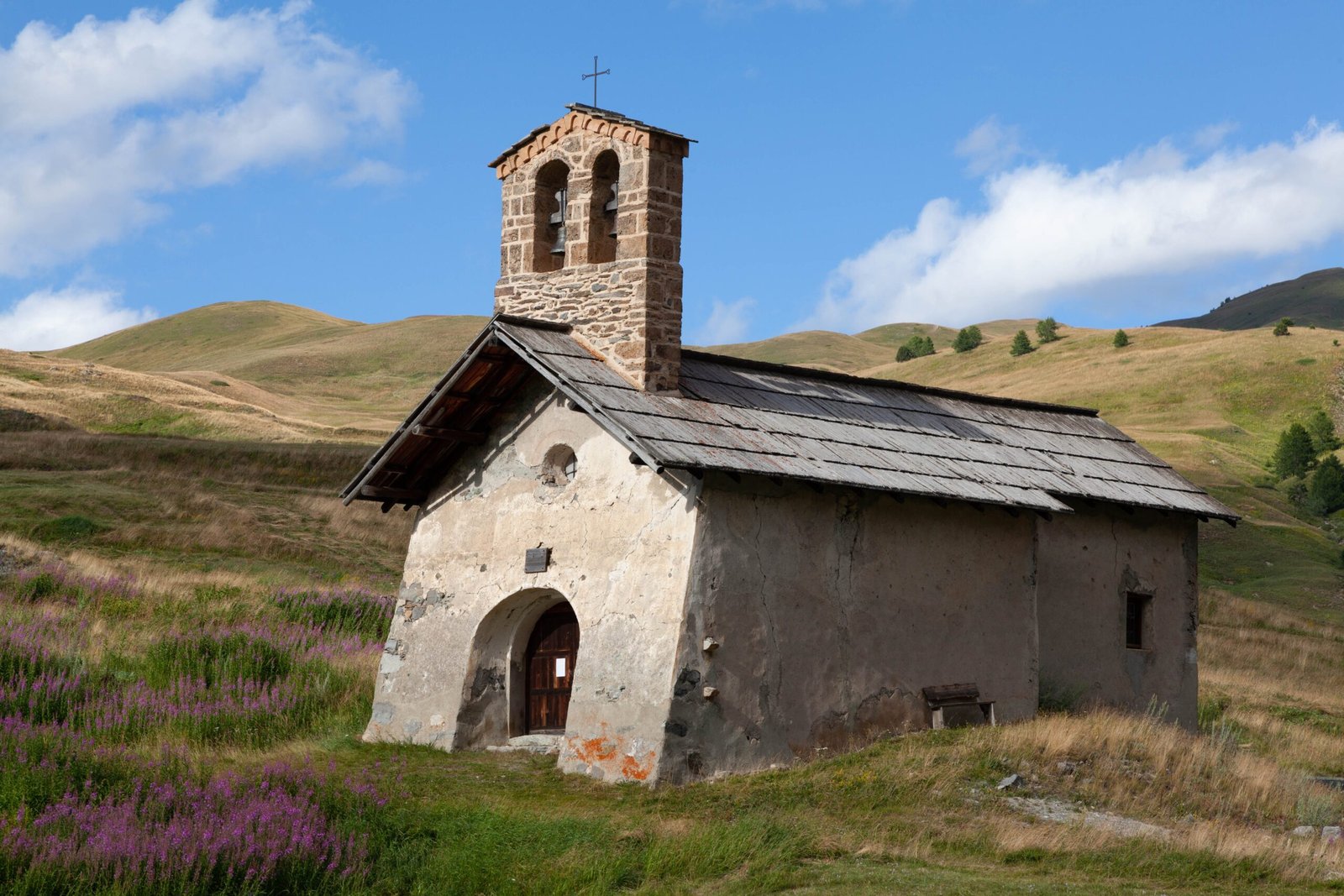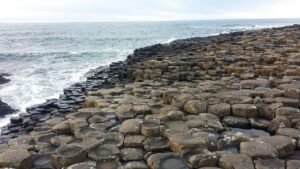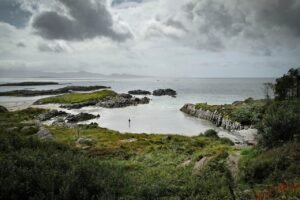
Imagine embarking on an enchanting journey to a place that seems straight out of a mythical tale – the Giant’s Causeway. Nestled on the rugged coast of Northern Ireland, it captivates visitors with its unique formation of hexagonal basalt columns, formed over 50 million years ago. As you explore this mystical wonder, you can’t help but marvel at the ancient myths and legends that surround it, leaving you with a sense of awe and intrigue.

The Legend of the Giant’s Causeway
The Mythical Origin of the Causeway
The Giant’s Causeway, located on the northern coast of County Antrim in Northern Ireland, remains one of the most captivating and mysterious natural wonders in the world. According to ancient Irish mythology, the causeway was built entirely by the giant warrior Finn McCool, who sought to create a path to Scotland in order to fight his rival giant, Benandonner. With its unique hexagonal stone columns, the Giant’s Causeway has always been associated with legends and myths, captivating the imaginations of locals and visitors alike.
Ancient Stories and Folklore
The tales surrounding the creation of the Giant’s Causeway have been passed down through generations, enriching the folklore of the region. According to one popular legend, Finn McCool tore pieces of the Antrim coast and threw them into the sea to create a bridge strong enough to withstand the clash with Benandonner. Other legends speak of giants battling each other amidst the stunning geological formations that now make up the causeway. These captivating stories have not only entertained but have also played a significant role in shaping the cultural identity of the region.
Geological Formation of the Giant’s Causeway
Basalt Columns and Hexagon Shape
The geological formation of the Giant’s Causeway is a remarkable marvel that has baffled scientists and geologists for centuries. Comprised of approximately 40,000 interlocking basalt columns, the Giant’s Causeway is renowned for its unique hexagonal shape. These columns, which vary in height and diameter, are the result of intense volcanic activity that took place over 50 million years ago.
Volcanic Activity and Cooling Process
The formation of the Giant’s Causeway began with intense volcanic eruptions that spewed lava over the landscape. As the lava cooled and contracted, it created fractures, ultimately leading to the formation of the hexagonal columns. The slow cooling process and the presence of various minerals, including basalt, resulted in the distinct formation we see today. The incredible consistency and precision of the hexagonal shape have captivated scientists and visitors alike, contributing to the allure and mystery that surround this natural wonder.

Exploring the Giant’s Causeway
Visitor Centers and Facilities
To enhance the visitor experience, several state-of-the-art visitor centers have been established near the Giant’s Causeway. These centers offer comprehensive educational resources, exhibitions, and audiovisual presentations that delve into the history, mythology, and geology of the causeway. Additionally, visitors can access modern amenities, including cafes, gift shops, and picnic areas, allowing for a comfortable and enjoyable visit.
Guided tours and Self-guided Walks
Exploring the Giant’s Causeway can be done through guided tours or self-guided walks, offering visitors the opportunity to discover the natural beauty and unique geology of the area at their own pace. Guided tours are led by knowledgeable local guides who share fascinating insights about the legends, history, and scientific aspects of the causeway. On the other hand, self-guided walks offer the freedom to explore the causeway independently, allowing for a more personal and immersive experience in this stunning natural landscape.
The Giant’s Causeway and its Natural Surroundings
Cliffs of Moher
In close proximity to the Giant’s Causeway lies another iconic natural landmark of Ireland – the Cliffs of Moher. With their awe-inspiring beauty and rugged charm, the Cliffs of Moher offer a stunning contrast to the unique hexagonal formations of the causeway. Towering up to 214 meters high, these majestic cliffs provide breathtaking panoramic views of the Atlantic Ocean, making them an essential destination for nature enthusiasts and photographers alike.
Carrick-a-Rede Rope Bridge
Another notable attraction near the Giant’s Causeway is the famous Carrick-a-Rede Rope Bridge. Suspended 30 meters above the crashing waves, this historic rope bridge connects the mainland to Carrick-a-Rede Island. Originally used by salmon fishermen, the bridge offers visitors a thrilling experience and a chance to admire the rugged coastal scenery from a unique perspective. The combination of these natural wonders in close proximity makes the area surrounding the Giant’s Causeway truly mesmerizing and ensures that there is always something extraordinary to explore.

Historical Significance of the Giant’s Causeway
Vikings and Gaelic Control
Throughout history, the Giant’s Causeway has played an integral role due to its strategic location and natural resources. The area witnessed various episodes of Viking invasions and Gaelic control, reflecting the region’s rich and complex history. The Giant’s Causeway served as a crucial point for trade and military endeavors, and remnants of ancient settlements can still be found in the surrounding areas today. Its historical significance further adds to the allure and fascination associated with the causeway.
Scottish Influence and Cultural Significance
The proximity of the Giant’s Causeway to Scotland has resulted in a significant Scottish influence on the region. For centuries, the causeway has been a symbol of cultural connection and exchange between Northern Ireland and Scotland. Scottish immigrants have made substantial contributions to the cultural fabric of the area, enriching art, music, and folklore. The shared traditions and historical ties continue to promote a sense of shared identity and cultural significance for both regions.
The Giant’s Causeway in Literature and Art
Inspiration for Poets and Writers
The enchanting and mystical landscape of the Giant’s Causeway has long inspired poets, writers, and artists. William Wordsworth, one of the most renowned English poets, immortalized the causeway in his poem “To the Giant’s Causeway.” Irish writers such as Seamus Heaney and W.B. Yeats also drew inspiration from the causeway, incorporating its grandeur and mythological aspects into their works. The natural beauty and extraordinary geology of the causeway have captivated the creative minds of generations, leaving an indelible mark on the world of literature.
Depictions in Paintings and Photography
The Giant’s Causeway has been a subject of fascination for artists and photographers for centuries. Painters sought to capture the sublime beauty of the causeway’s unique geological formations, often showcasing the dramatic contrast against the crashing waves and the rugged coastline. Today, the causeway continues to be a favorite subject for photographers who strive to capture its ethereal quality and showcase its grandeur to the world.
Myth and Reality: Scientific Explanations of the Causeway
Plate Tectonics and Continental Drift
While myths and legends have surrounded the Giant’s Causeway for centuries, scientific explanations provide a deeper understanding of its origins. According to modern geology, the causeway’s formation can be attributed to plate tectonics and continental drift. As the Earth’s tectonic plates moved and collided, various geological forces shaped the landscape, eventually leading to the creation of the basalt columns and the hexagonal formations we see today.
Volcanic Eruptions and Lava Flows
The volcanic eruptions that occurred millions of years ago played a crucial role in the formation of the Giant’s Causeway. The lava that spewed forth cooled and solidified, creating the basalt that makes up the columns. Over time, water erosion and geological processes further shaped the columns, giving them their distinctive hexagonal shape and forming the remarkable landscape that we observe today.
Preservation Efforts and Conservation Challenges
Protection of a World Heritage Site
Recognizing the unique geological and cultural value of the Giant’s Causeway, it was designated as a UNESCO World Heritage Site in 1986. This designation recognized the importance of preserving and conserving this remarkable natural wonder for future generations. Efforts have been made to safeguard the site and ensure its long-term preservation through careful management and conservation practices.
Environmental Threats and Management Plans
Preserving the Giant’s Causeway is not without challenges. Environmental threats, such as erosion, climate change, and visitor impact, pose ongoing concerns that require careful management and planning. Various measures, including the construction of coastal defenses and regulated access, have been undertaken to minimize these threats. Continued research and monitoring are essential to understanding and managing these challenges effectively, ensuring the long-term sustainability and preservation of the Giant’s Causeway.
Tourism and Economic Impact of the Giant’s Causeway
Tourist Arrivals and Revenue Generation
The Giant’s Causeway’s magnetic allure attracts millions of visitors each year, contributing significantly to the local economy and tourism industry. Tourist arrivals have steadily increased, giving a boost to the surrounding communities and businesses. The revenue generated from tourism facilitates the preservation and maintenance of the site, while also supporting local businesses, hotels, restaurants, and transport services.
Local Businesses and Job Creation
The thriving tourism industry centered around the Giant’s Causeway has created numerous employment opportunities for the local community. From guided tour operators to hospitality services, the demand for skilled workers has grown, providing jobs and income to residents in the region. This economic impact not only benefits the locals but also fosters a sense of pride in their unique heritage and natural landscape.
Controversies and Debates Surrounding the Giant’s Causeway
Creationism versus Geological Science
Like many natural wonders with deep-rooted legends and religious connotations, the Giant’s Causeway has not been immune to controversies and debates. The causeway’s formation and scientific explanations have been met with skepticism by some who advocate for creationism or religious interpretations of its origins. These differing views have sparked debates that continue to provoke discussions within religious, scientific, and educational communities.
Ownership and Rights of the Causeway
Ownership and rights to the Giant’s Causeway have also been subjects of controversy. In the past, disputes have arisen over its management and accessibility, particularly related to issues of public versus private ownership. The ongoing dialogue and negotiations aim to strike a balance between maximizing tourism opportunities and ensuring responsible stewardship of this precious natural heritage.
In conclusion, the Giant’s Causeway is a captivating and multifaceted destination that combines both mythical legends and scientific wonders. Its unique geological formations, rich cultural heritage, and scenic surroundings make it an exceptional place that continues to intrigue and inspire visitors from around the world. The efforts to preserve and protect this natural wonder ensure its continued significance for generations to come, while the tourism and economic impact it generates provide both opportunities and challenges for the local communities. Whether you visit for its mythical allure, scientific curiosity, or artistic inspiration, the Giant’s Causeway promises an unforgettable experience that will leave an indelible mark on your memories.







